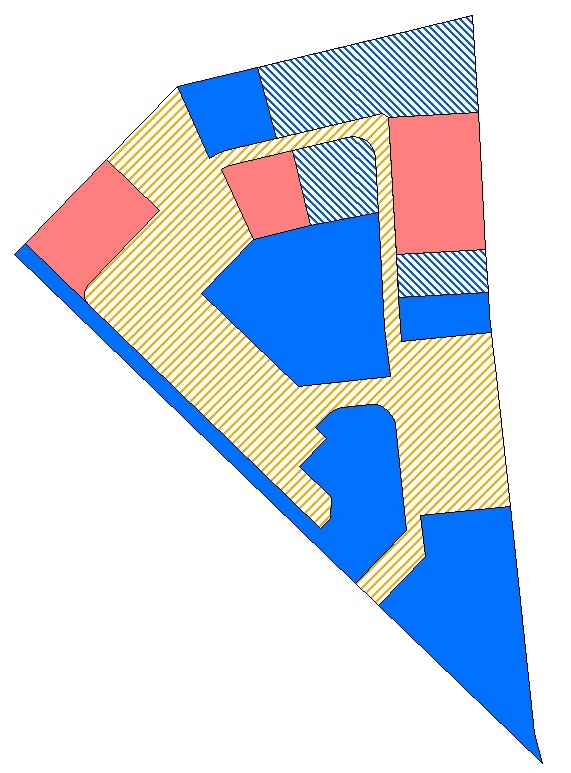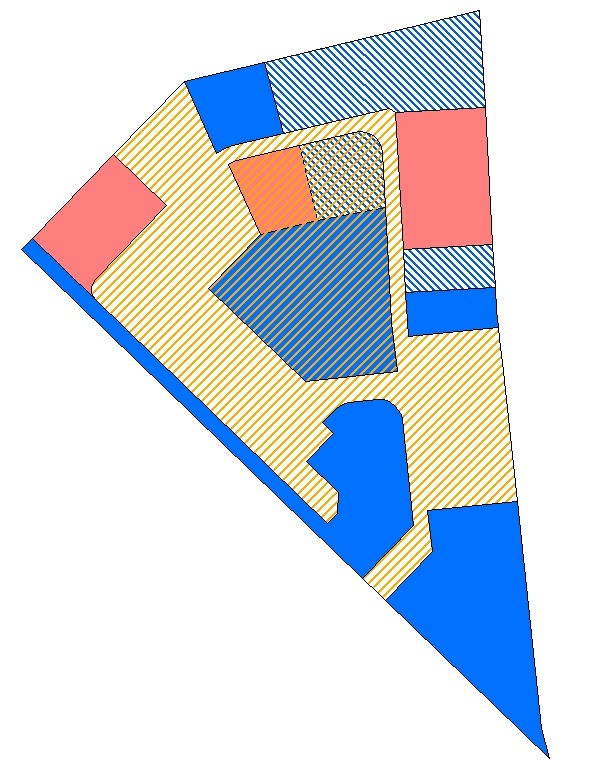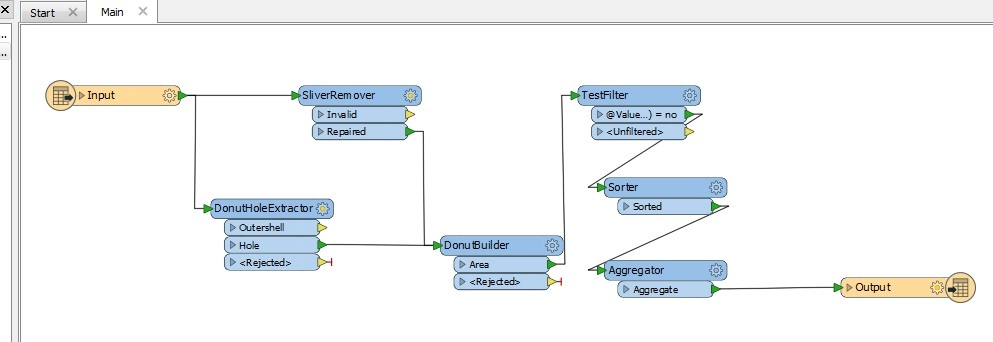I'm having an issue while trying to clean up a dataset. I'm using the SliverRemover to remove slivers found in the dataset. I'm finding that it is filling in any donut holes in the process. I was able to remedy this by adding in a DonutHoleExtractor and DonutBuilder then a TestFilter to rebuild the donuts then remove the holes.
This creates a new issue though. In areas where there are polygons that create a "hole" but there is actually a polygon there the area is getting merged. So in the end there are overlapping polygons and I don't want this. I've tried my best to describe what's happening in the following two images.
In the first image, the original dataset with no overlapping polygons.

The second image, the output with the overlapping polygons.

Here is a screencap of my workspace.

Does anyone know of a way to keep the original geometry in place while running the SliverRemover? Any help would be greatly appreciated.
Thanks







